 Phillip C. Sternes. Department of Evolution, Ecology, and Organismal Biology, University of California Riverside, Riverside, California, USA (corresponding author). philsternes77@gmail.com
Phillip C. Sternes. Department of Evolution, Ecology, and Organismal Biology, University of California Riverside, Riverside, California, USA (corresponding author). philsternes77@gmail.com
A PhD candidate studying shark morphology at the University of California, Riverside.
![]()
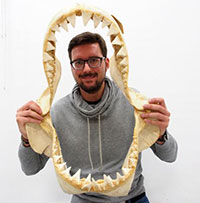 Patrick L. Jambura. Department of Palaeontology, University of Vienna, 1090 Vienna, Austria and Vienna Doctoral School of Ecology and Evolution (VDSEE), University of Vienna, 1030 Vienna, Austria. patrick.jambura@gmail.com
Patrick L. Jambura. Department of Palaeontology, University of Vienna, 1090 Vienna, Austria and Vienna Doctoral School of Ecology and Evolution (VDSEE), University of Vienna, 1030 Vienna, Austria. patrick.jambura@gmail.com
Doctoral student in shark paleontology at the University of Viennna.
![]()
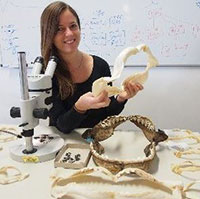 Julia Türtscher. Department of Palaeontology, University of Vienna, 1090 Vienna, Austria and Vienna Doctoral School of Ecology and Evolution (VDSEE), University of Vienna, 1030 Vienna, Austria. tuertscher.julia@gmail.com
Julia Türtscher. Department of Palaeontology, University of Vienna, 1090 Vienna, Austria and Vienna Doctoral School of Ecology and Evolution (VDSEE), University of Vienna, 1030 Vienna, Austria. tuertscher.julia@gmail.com
Doctoral student in shark paleontology at the University of Vienna.
![]()
 Jürgen Kriwet. Department of Palaeontology, University of Vienna, 1090 Vienna, Austria and Vienna Doctoral School of Ecology and Evolution (VDSEE), University of Vienna, 1030 Vienna, Austria. juergen.kriwet@univie.ac.at
Jürgen Kriwet. Department of Palaeontology, University of Vienna, 1090 Vienna, Austria and Vienna Doctoral School of Ecology and Evolution (VDSEE), University of Vienna, 1030 Vienna, Austria. juergen.kriwet@univie.ac.at
Professor of Paleobiology at the University of Vienna. His group focuses predominantly on evolutionary and palaeobiological aspects of marine vertebrates employing state-of-the-art methodological approaches and integrating living and fossil organisms, knowledge of their evolutionary relationships and past diversity patterns, evolutionary developmental biology, and statistic applications to provide a holistic understanding of their evolutionary history.
![]()
 Mikael Siversson. Department of Earth and Planetary Sciences, Western Australian Museum, Welshpool, WA, Australia and School of Molecular and Life Sciences, Curtin University, Bentley, WA, Australia. mikael.siversson@museum.wa.gov.au
Mikael Siversson. Department of Earth and Planetary Sciences, Western Australian Museum, Welshpool, WA, Australia and School of Molecular and Life Sciences, Curtin University, Bentley, WA, Australia. mikael.siversson@museum.wa.gov.au
Head of Department of Earth and Planetary Sciences, Australian Museum.
His research focuses on Cretaceous and Cenozoic elasmobranchs (sharks and rays) from Australia, North America and Europe but with focus on Australian mid-Cretaceous and Miocene faunas. Cretaceous dinosaurs and marine reptiles from Australia and northern Europe.
![]()
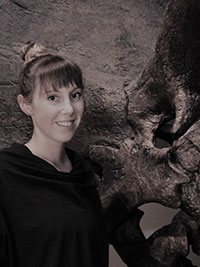 Iris Feichtinger. Geological-Palaeontological Department, Natural History Museum, 1010 Vienna, Austria and University of Graz, NAWI Geocenter, Institute of Earth Sciences, Graz, Austria. Iris.Feichtinger@nhm-wien.ac.at
Iris Feichtinger. Geological-Palaeontological Department, Natural History Museum, 1010 Vienna, Austria and University of Graz, NAWI Geocenter, Institute of Earth Sciences, Graz, Austria. Iris.Feichtinger@nhm-wien.ac.at
Naturhistorisches Museum Wien. My main interests focus on the evolution and diversity patterns of Austrian elsamobranchs through deep time. Besides morphological descriptions, I am interested in dental histology including the internal structures of vascularization patterns and enameloid microstructures of both teeth and denticles.
![]()
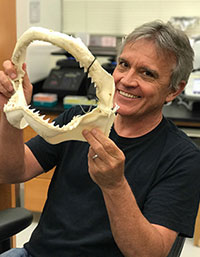 Gavin J.P. Naylor. Florida Museum of Natural History, University of Florida, Gainesville, Florida, USA. gnaylor@flmnh.ufl.edu
Gavin J.P. Naylor. Florida Museum of Natural History, University of Florida, Gainesville, Florida, USA. gnaylor@flmnh.ufl.edu
Director of Florida Program for Shark Research. Interested in molecular evolution and biological diversification. Maintain an empirical research program that explores these questions with sharks and rays.
![]()
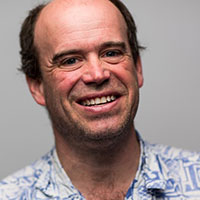 Adam P. Summers. Biology Department, University of Washington, Seattle, Washington, USA and Friday Harbor Laboratories, University of Washington, Friday Harbor, Washington, USA. fishguy@uw.edu
Adam P. Summers. Biology Department, University of Washington, Seattle, Washington, USA and Friday Harbor Laboratories, University of Washington, Friday Harbor, Washington, USA. fishguy@uw.edu
Professor of biomechanics, at the University of Washington. My research has been influenced by my background in engineering and mathematics and my interest in the evolution of non-human animals. I have many collaborative projects on a variety of vertebrate taxa, including reptiles, amphibians, bony fishes, and cartilaginous fishes. My main research program focuses on understanding the effects of material properties on the form and function of organisms. For example, I use a comparison between the cartilaginous fishes and the bony fishes as a model system for understanding the constraints and opportunities presented by a cartilaginous skeleton.
![]()
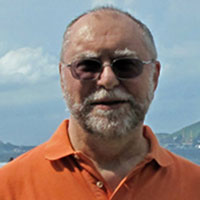 John G. Maisey. Department of Vertebrate Paleontology, American Natural History Museum, New York, New York, USA. maisey@amnh.org
John G. Maisey. Department of Vertebrate Paleontology, American Natural History Museum, New York, New York, USA. maisey@amnh.org
John G. Maisey is the Curator Emeritus and Senior Scientist in Residence of the Department of Fossil Fish in the Division of Paleontology at the American Museum of Natural History. He received his Bachelor of Sciences from the University of Exeter in 1970. Following this, he earned his Doctorate of Philosophy and PhD from the University of London in 1971 and 1974, respectively. He served as Adjunct Professor in the Department of Biology and Doctoral faculty of the Graduate School and University Center at the City University of New York in 1990.
![]()
 Taketeru Tomita. Okinawa Churashima Research Center, Okinawa Churashima Foundation, Motobu-cho, Okinawa, Japan and Okinawa Churaumi Aquarium, Okinawa Churashima Foundation, Motobu-cho, Okinawa, Japan. t-tomita@okichura.jp
Taketeru Tomita. Okinawa Churashima Research Center, Okinawa Churashima Foundation, Motobu-cho, Okinawa, Japan and Okinawa Churaumi Aquarium, Okinawa Churashima Foundation, Motobu-cho, Okinawa, Japan. t-tomita@okichura.jp
Research Scientist at the Okinawa Churashima Research Institute. Areas of expertise: Biology of chondrichthyan fishes (sharks, batoids and chimaeras). Research content: Functional morphology and evolutionary biology of chondrichthyan fishes.
![]()
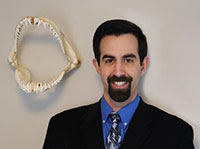 Joshua K. Moyer. Department of Ecology and Evolutionary Biology, Yale University, New Haven, Connecticut, USA. and Atlantic Shark Institute, Wakefield, Rhode Island, USA. joshua.k.moyer@gmail.com
Joshua K. Moyer. Department of Ecology and Evolutionary Biology, Yale University, New Haven, Connecticut, USA. and Atlantic Shark Institute, Wakefield, Rhode Island, USA. joshua.k.moyer@gmail.com
Lecturer, Ecology and Evolution, Yale University, Resident Research Scientist Atlantic Shark Institute. Joshua Moyer is an evolutionary biologist whose research focuses on the ecological morphology and evolution of chondrichthyan fishes. Joshua earned his undergraduate degree in biology from Millersville University of Pennsylvania and his Master of Science in ecology and evolutionary biology from Cornell University. His doctoral work at the University of Massachusetts Amherst centered on the anatomy and kinematics of feeding in sharks.
![]()
 Timothy E. Higham. Department of Evolution, Ecology, and Organismal Biology, University of California Riverside, Riverside, California, USA. thigham@ucr.edu
Timothy E. Higham. Department of Evolution, Ecology, and Organismal Biology, University of California Riverside, Riverside, California, USA. thigham@ucr.edu
Professor of Biomechanics, University of California Riverside. Comparative Biomechanics and Functional Morphology. Focus on geckos, snakes, and fishes.
![]()
 João Paulo C.B. da Silva. Departamento de Sistemática e Ecologia, Centro de Ciências Exatas e da Natureza, Universidade Federal da Paraíba, Castelo Branco, João Pessoa, PB, 58051-900, Brazil. jpzoologia@dse.ufpb.br
João Paulo C.B. da Silva. Departamento de Sistemática e Ecologia, Centro de Ciências Exatas e da Natureza, Universidade Federal da Paraíba, Castelo Branco, João Pessoa, PB, 58051-900, Brazil. jpzoologia@dse.ufpb.br
Researcher at Universidade Federal da Paraíba. Focuses on shark morphology.
![]()
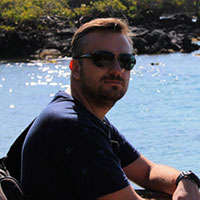 Hugo Bornatowski. Center for Marine Studies, Universidade Federal do Paraná, Brazil. anequim.bio@gmail.com
Hugo Bornatowski. Center for Marine Studies, Universidade Federal do Paraná, Brazil. anequim.bio@gmail.com
Professor at Universidade Federal do Paraná. Studies shark ecology.
![]()
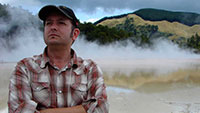 Douglas J. Long. Department of Ichthyology, California Academy of Sciences, San Francisco, California, USA. dlong@calacademy.org
Douglas J. Long. Department of Ichthyology, California Academy of Sciences, San Francisco, California, USA. dlong@calacademy.org
Ichthyologist at the California Academy of Sciences. Douglas’ research in the marine sciences focuses primarily on the taxonomy, ecology, and biogeography of sharks, rays, chimeras and deep-sea bony fishes, as well as their fossil history, with the occasional detour into marine mammals. After graduating with a MA in paleontology and a PhD in evolutionary biology at the University of California, Berkeley, he continued as a researcher and then curator at the California Academy of Sciences, and later at the Oakland Museum of California.
![]()
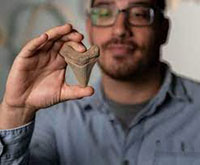 Victor J. Perez. Environmental Studies Department, St. Mary’s College of Maryland, St. Mary’s City, Maryland, USA. vjperez@smcm.edu
Victor J. Perez. Environmental Studies Department, St. Mary’s College of Maryland, St. Mary’s City, Maryland, USA. vjperez@smcm.edu
Visiting Assistant Professor St. Mary's College of Maryland. I am a paleontologist, coastal geologist, and STEM educator. Through my research and teaching practices, I decipher and share the stories of Earth’s dynamic history. I specialize on the evolution and ecology of sharks and rays, exploring how biotic and abiotic factors drive extinction and diversification in marine ecosystems.
![]()
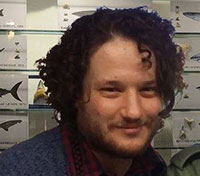 Alberto Collareta. Dipartimento di Scienze della Terra, Università di Pisa, via S. Maria 53, 56126 Pisa, PI, Italy. alberto.collareta@unipi.it
Alberto Collareta. Dipartimento di Scienze della Terra, Università di Pisa, via S. Maria 53, 56126 Pisa, PI, Italy. alberto.collareta@unipi.it
Paleontologist at Università di Pisa. Focuses on sharks.
![]()
 Charlie Underwood. Department of Earth and Planetary Sciences, Birkbeck College, London, UK. c.underwood@bbk.ac.uk
Charlie Underwood. Department of Earth and Planetary Sciences, Birkbeck College, London, UK. c.underwood@bbk.ac.uk
Paleontologist at Birkbeck College, University of London. Research interests: The evolution and palaeontology of sharks and relatives. Development and evolution of teeth and related structures of cartilaginous vertebrates. Mesozoic and Cenozoic marine palaeontology.
![]()
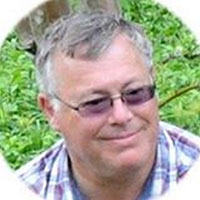 David J. Ward. Department of Earth Sciences, Natural History Museum, London, UK. david@fossil.ws
David J. Ward. Department of Earth Sciences, Natural History Museum, London, UK. david@fossil.ws
Paleontologist at the Natural History Museum, London. Currently studies the megatooth clade of sharks.
![]()
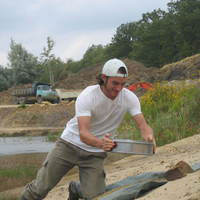 Romain Vullo. Univ Rennes, CNRS, Géosciences Rennes, UMR 6118, 35000 Rennes, France. romain.vullo@univ-rennes.fr
Romain Vullo. Univ Rennes, CNRS, Géosciences Rennes, UMR 6118, 35000 Rennes, France. romain.vullo@univ-rennes.fr
Researcher at Université de Rennes 1. A paleontologist who studies sharks.
![]()
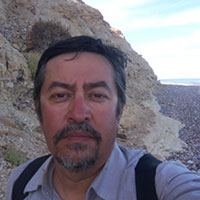 Gerardo González-Barba. Museo de Historia Natural-UABCS, Colonia El Mezquitito, CP 23080, La Paz, Baja California Sur, Mexico. gerardo@uabcs.mx
Gerardo González-Barba. Museo de Historia Natural-UABCS, Colonia El Mezquitito, CP 23080, La Paz, Baja California Sur, Mexico. gerardo@uabcs.mx
Researcher at Universidad Autonoma de Baja California, Biologia Marina. Has an interest in marine biology and paleontology.
![]()
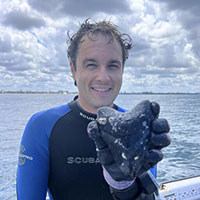 Harry M. Maisch IV. Department of Marine and Earth Sciences, Florida Gulf Coast University, Fort Myers, Florida, USA. hmaisch@fgcu.edu
Harry M. Maisch IV. Department of Marine and Earth Sciences, Florida Gulf Coast University, Fort Myers, Florida, USA. hmaisch@fgcu.edu
Harry M. Maisch IV is an Instructor of Earth Science at Florida Gulf Coast University. His research primarily focuses on Cenozoic chondrichthyan and osteichthyan paleontology and taphonomy from the Atlantic and Gulf Coastal Plains of the United States.
![]()
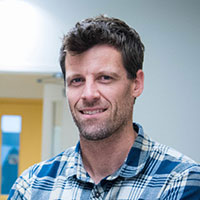 Michael L. Griffiths. Department of Environmental Science, William Paterson University of New Jersey, Wayne, New Jersey, USA. GRIFFITHSM@wpunj.edu
Michael L. Griffiths. Department of Environmental Science, William Paterson University of New Jersey, Wayne, New Jersey, USA. GRIFFITHSM@wpunj.edu
Professor at William Paterson University. I am a geochemist and climate scientist whose research involves using geologic records and model simulations to better understand earth system processes. I am principally focused on reconstructing the evolution of Earth’s oceans and climate covering a range of timescales, from the last millennium back to the age of the dinosaurs.
![]()
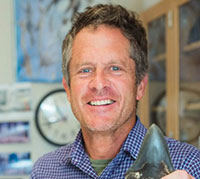 Martin A. Becker. Department of Environmental Science, William Paterson University of New Jersey, Wayne, New Jersey, USA. BECKERM2@wpunj.edu
Martin A. Becker. Department of Environmental Science, William Paterson University of New Jersey, Wayne, New Jersey, USA. BECKERM2@wpunj.edu
Professor at William Paterson University. My research is based on self-collected fossil assemblages discovered across the United States and focuses primarily on evolutionary relationships of chondrichthyans, osteichthyans and reptiles.
![]()
 Jake J. Wood. Department of Biological Sciences, DePaul University, Chicago, Illinois, USA. chondrichthyic@gmail.com
Jake J. Wood. Department of Biological Sciences, DePaul University, Chicago, Illinois, USA. chondrichthyic@gmail.com
Master's student DePaul University who focuses on shark morphology and evolution.
![]()
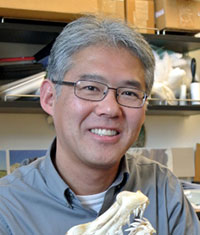 Kenshu Shimada. Department of Biological Sciences, DePaul University, Chicago, Illinois, USA, Department of Environmental Science and Studies DePaul University, Chicago, Illinois, USA, and Sternberg Museum of Natural History, Fort Hays State University, Hays, Kansas, USA (corresponding author). kshimada@depaul.edu
Kenshu Shimada. Department of Biological Sciences, DePaul University, Chicago, Illinois, USA, Department of Environmental Science and Studies DePaul University, Chicago, Illinois, USA, and Sternberg Museum of Natural History, Fort Hays State University, Hays, Kansas, USA (corresponding author). kshimada@depaul.edu
Professor of Paleobiology at DePaul University and Research Associate at Sternberg Museum of Natural History. himada is interested in the evolution of marine ecosystems over geologic time, particularly by examining the paleobiology of sharks and other marine vertebrates that lived during the ‘age of dinosaurs’ (Mesozoic). While he studies a variety of organisms in the context of paleoecology, his specialty is in a group of sharks called lamniforms that have been ecologically important in past and present oceans as they include top predators (e.g., mako and great white sharks) and large plankton feeders (e.g., basking and megamouth sharks). Shimada enjoys demonstrating the relationships of morphology in such aquatic vertebrates to their life history strategies, behavior, ecology, and evolution.

